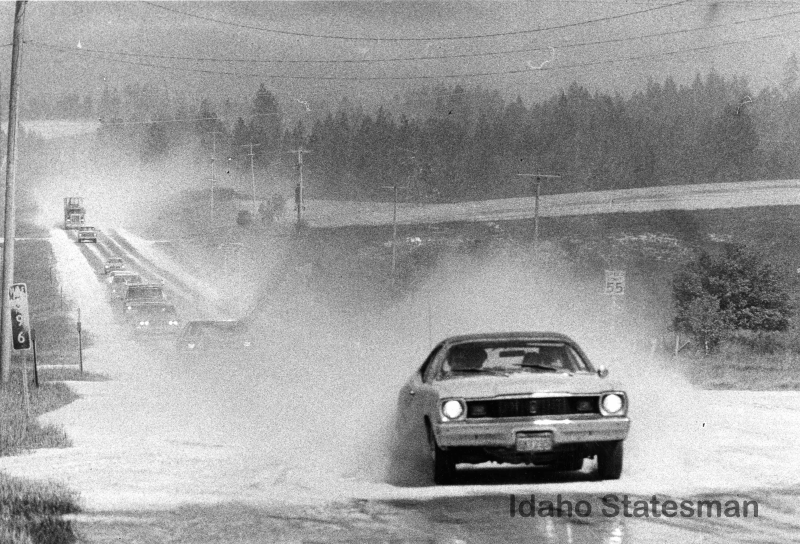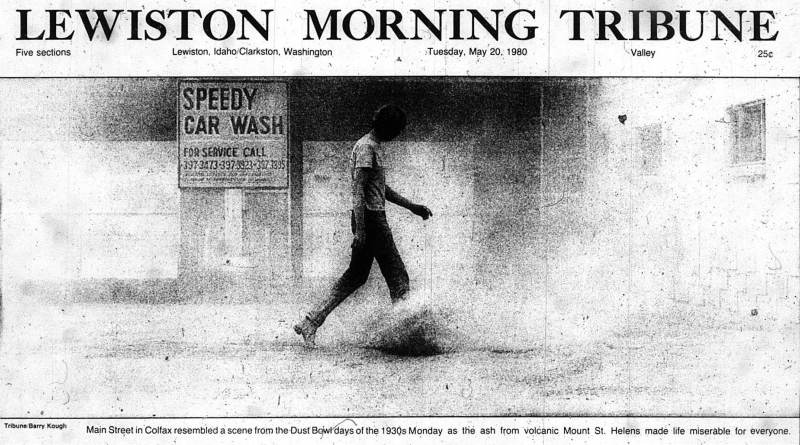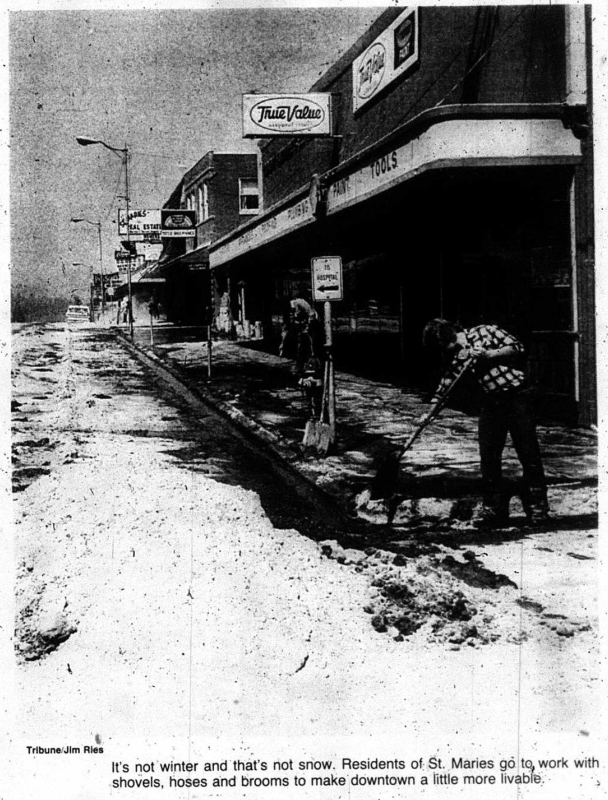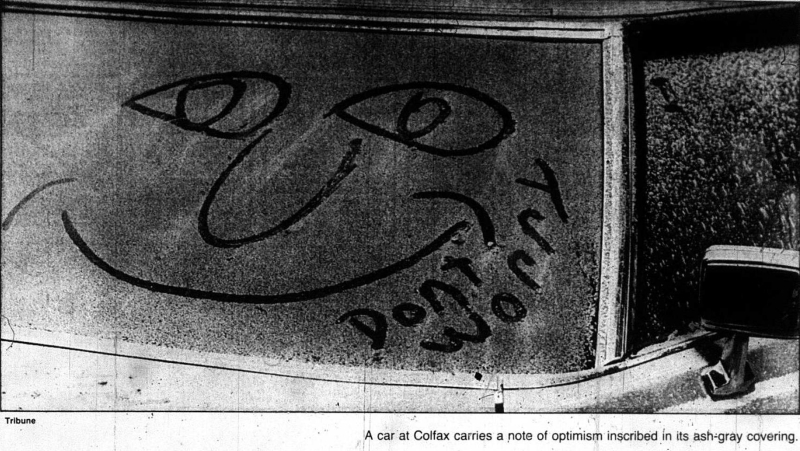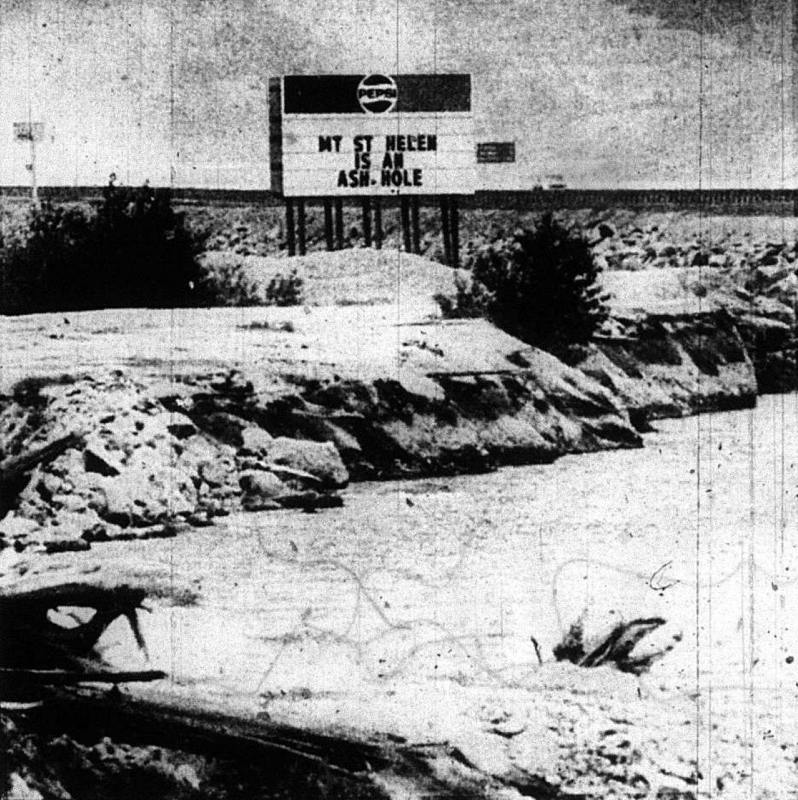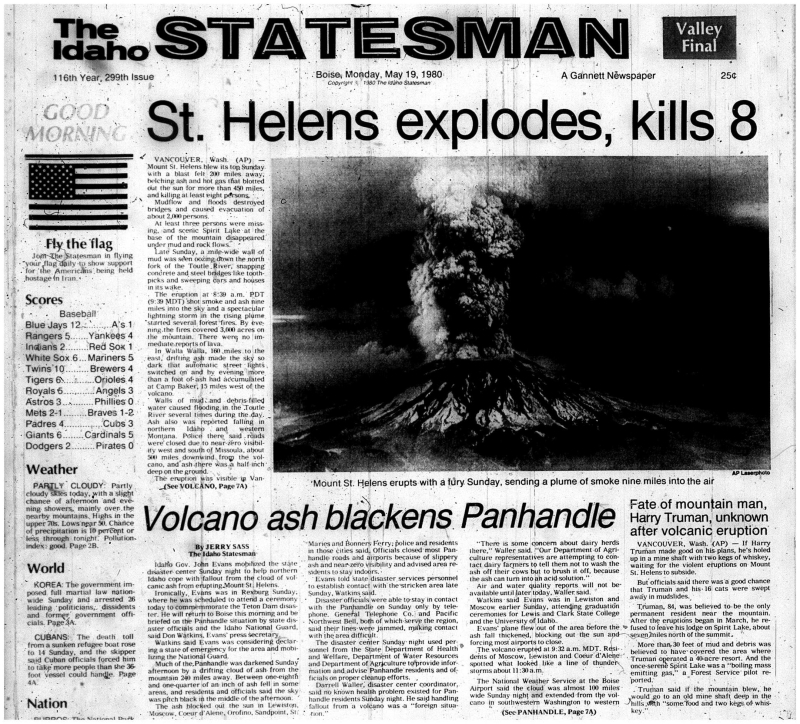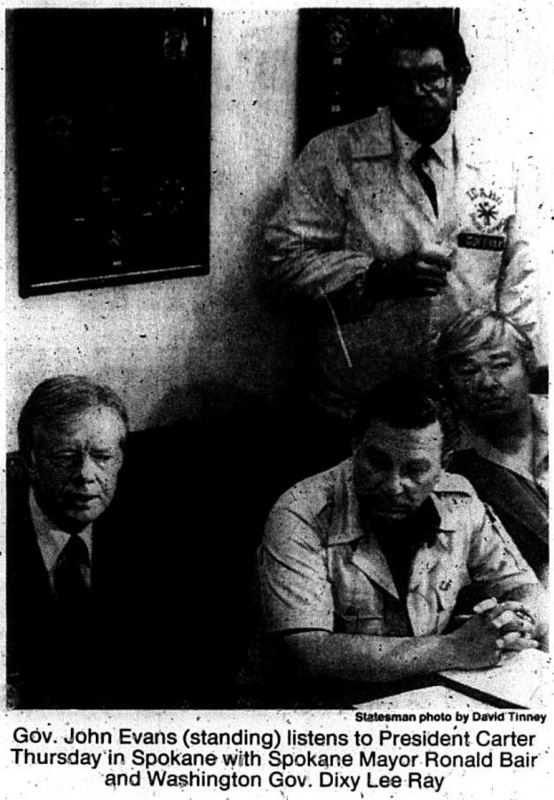1980 Mount St Helens
For nearly two months Mount St Helens in Washington state rumbled with small earthquakes and explosions, and swelled as magma moved into the volcano. On May 18, 1980 at 8:32 a.m. PDT, the north side of the volcano fell away in a large landslide (debris avalanche). As the overlying rock that held in the pressurized magma fell away, the now unconfined magma erupted out the north side of the mountain in an explosive lateral blast. The lateral blast destroyed an area of 215 mi2—23 mi east to west and 18 mi north. Soon after a Plinian eruption column filled with hot ash, gas, and rock rose over 20 km into the atmosphere. Large lahars or mudflows raced down the Toutle River during the afternoon picking up timber and destroying roads, bridges, cars, and towns along the way. With everyone’s attention turned to the volcano itself, scientists and emergency managers overlooked the threat posed by the millions of tons of ash erupted high into the atmosphere.
By mid-afternoon, eastern Washington and northern Idaho were plunged into darkness as the thick ash clouds rolled in overhead. Day turned to night as light sensitive streetlamps flickered to life and tiny ash particles began to blanket the towns like snow. Overall, the ash affected Washington, Idaho, Montana, Wyoming, Colorado, and the northern part of New Mexico and ranged from heavy ash fall to hazy skies. In Idaho, around two inches of ash fell on towns from Moscow to Coeur d’Alene but ash fall extended from McCall to Canada. Unlike ash from fires, volcanic ash is composed of tiny shards of sharp glass and rock that forms a concrete-like material when wet and can significantly damage a person’s lungs. Over the next few days, northern Idaho came to a complete standstill, even the U.S. postal service ceased operations. President Carter issued a federal major disaster declaration for the state of Washington on May 21, 1980 and for Idaho the next day.
No warnings alerted residents or emergency managers in Idaho to the imminent approach of the ash cloud or what to do when it arrived. Officials instructed people to remain indoors if at all possible and wear masks if one needed to go outside, but such an incident was unprecedented and left people with more questions than answers on how to respond. Often the recommended response was soon revoked in place of a new course of action. Initially, concern arose that the ash could be laden with sulfur dioxide and toxic to inhale, corrosive to cars, and too acidic for crops. Reports two days later found that the ash did not contain toxic sulfur dioxide and was only mildly acidic with a pH of 4.7. However, even though it wouldn’t damage a vehicle’s paint, it was still small enough to inhale deep into one’s lungs and cause respiratory harm. In fact, respiratory irritation accounted for most ash-related trips to the hospital. The Lewiston Tribune reported that Coeur d’Alene air monitors recorded particle concentrations of 15,000 per cubic meter . Emergency levels were any concentration above 875 particulates per cubic meter. Also, many crops survived the ash fall and the next few years proved to be some of the best for Idaho agriculture.
When people started to clean up the ash, it quickly became evident that brushing or scooping up the ash simply tossed it back into the air. In response, residents were told to water down the ash. This directive sent residents on a watering spree that increased water consumption to 10,000 gallons per minute in Moscow. Consuming water at twice the peak summer rate, the reservoir that serves Moscow dropped from 2.8 million gallons to 1.3 million gallons in just eight hours. To stem the tide of water consumption, towns throughout the panhandle enacted bans on water use. Additionally, ash washing down drains risked clogging pipes and caused Bonners Ferry and St. Maries to shut off the town water. By Tuesday May 20, towns began effectively removing ash with street crews and water and vacuum trucks. Towns used creative techniques for disposing of ash. For instance, the Lewiston Tribune reported that the city planned to use the ash to fill in a field and create a new cemetery. Yakima, WA similarly used ash to fill a depression and build a city park.
Transportation came to a near standstill during the heaviest ash fall on Sunday and Monday stranding numerous travelers. Airports and bus stations closed with the exception of a few routes to Boise and trains ran on significantly reduced schedules. Three of the major highways in northern Idaho closed completely and towns such as Moscow and St. Maries enacted mandatory 10 mph speed limits. Extremely low visibility only worsened as cars kicked more ash up into the air. Ash quickly clogged a car’s air filter requiring drivers to change the filter every few miles. People even began constructing makeshift air filters out of panty hose and wet sponges.
When Mount St Helens erupted, Idaho’s election primaries were scheduled to take place in shortly over a week. With the mail system stalled, transportation halted, and attention focused on clean-up and recovery, discussion swirled around whether or not to postpone the primaries or extend the deadline for registration and mail-in ballots. In the end, Governor Evans decided not to postpone the primary but left registration open until the day of the primary. Even with registration extended, poor voter turnout left some towns with around 17 percent turnout by 5 p.m.
In the weeks after May 18, 1980, the residents of northern Idaho banded together to clean up their communities. Tensions ran high over the reluctance of some officials to bring in the Idaho National Guard to help with recovery after the Governor promised their deployment. As time dragged on, complaints arose over the Guard’s slow and limited response. State Senator CC “Cy” Chase openly criticized the state’s response while the Governor worked to defend the response as adequate and timely, noting that clean-up was, intrinsically, an issue for local government. While the ash didn’t cause severe injury or loss of life in Idaho, it was a significant nuisance that was projected to cost tens of millions of dollars in loss of business, clean-up, and vehicle damage.
1980 Mount St Helens
References
- Lipman, P.W. & Mullineaux, D.R. (Eds.). (1981). The 1980 Eruptions of Mount St. Helens, Washington. Geological Survey Professional Paper 1250. Washington, D.C.: United States Government Printing Office.
- Selected articles from the Idaho Statesman and Lewiston Tribune from May 19 to 31, 1980.
- United States Geological Survey. (2000). Volcanic Ash Fall—A “Hard Rain” of Abrasive Particles (USGS Fact Sheet 027-00).




